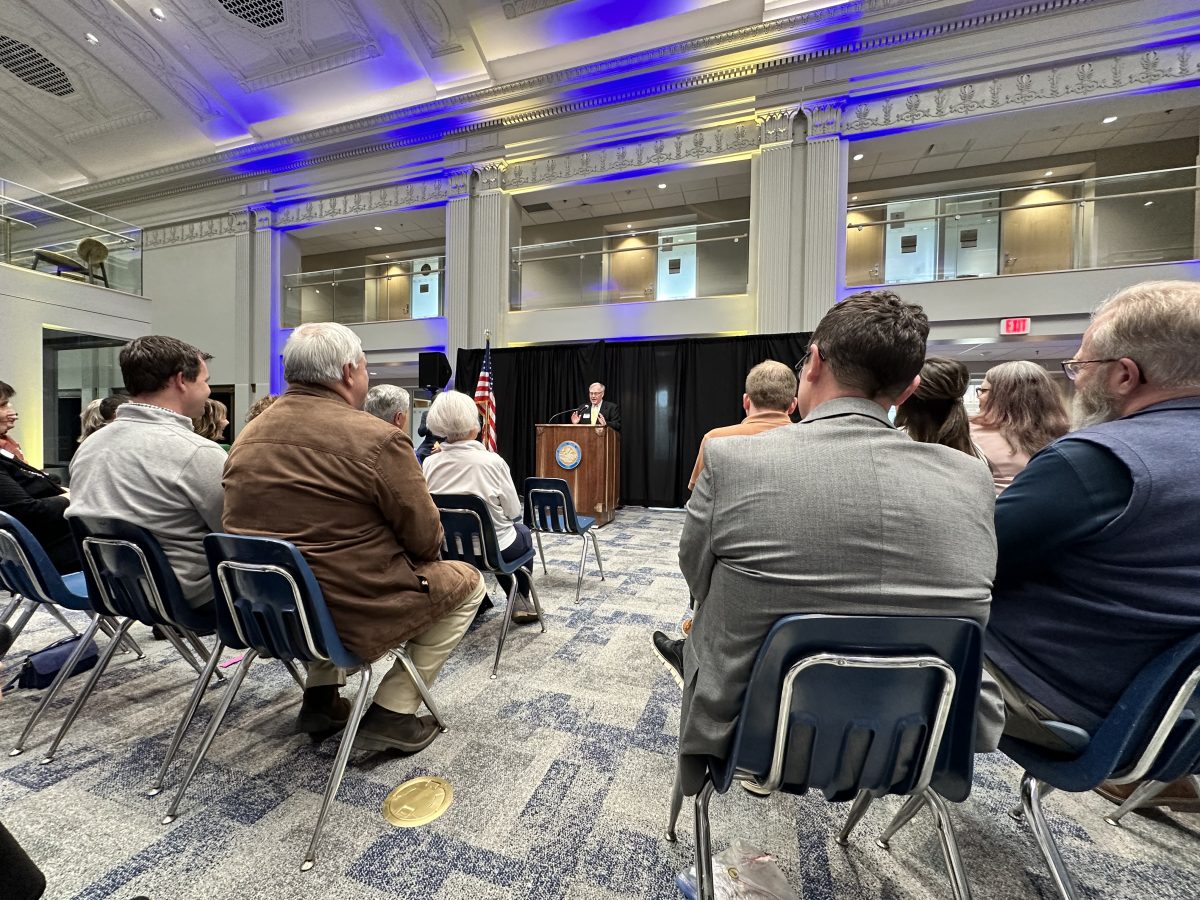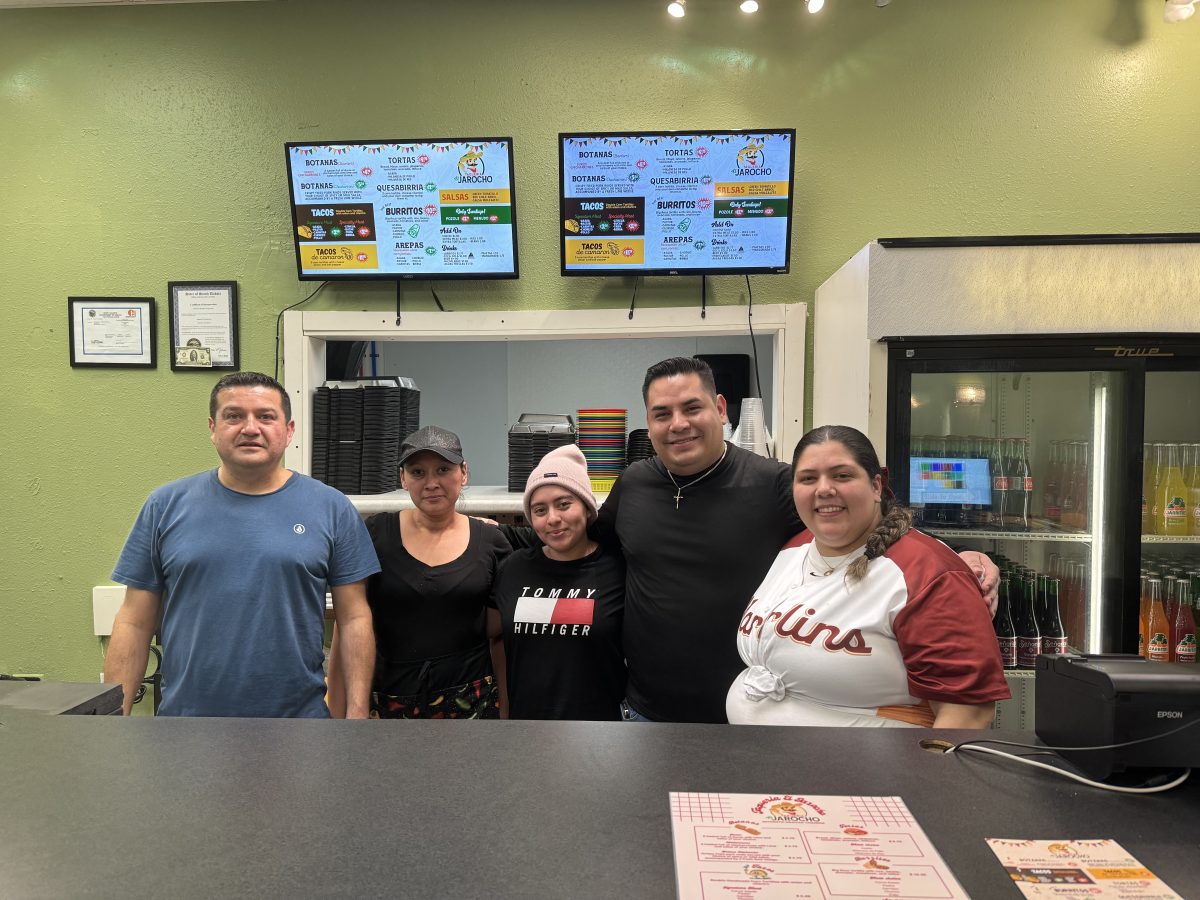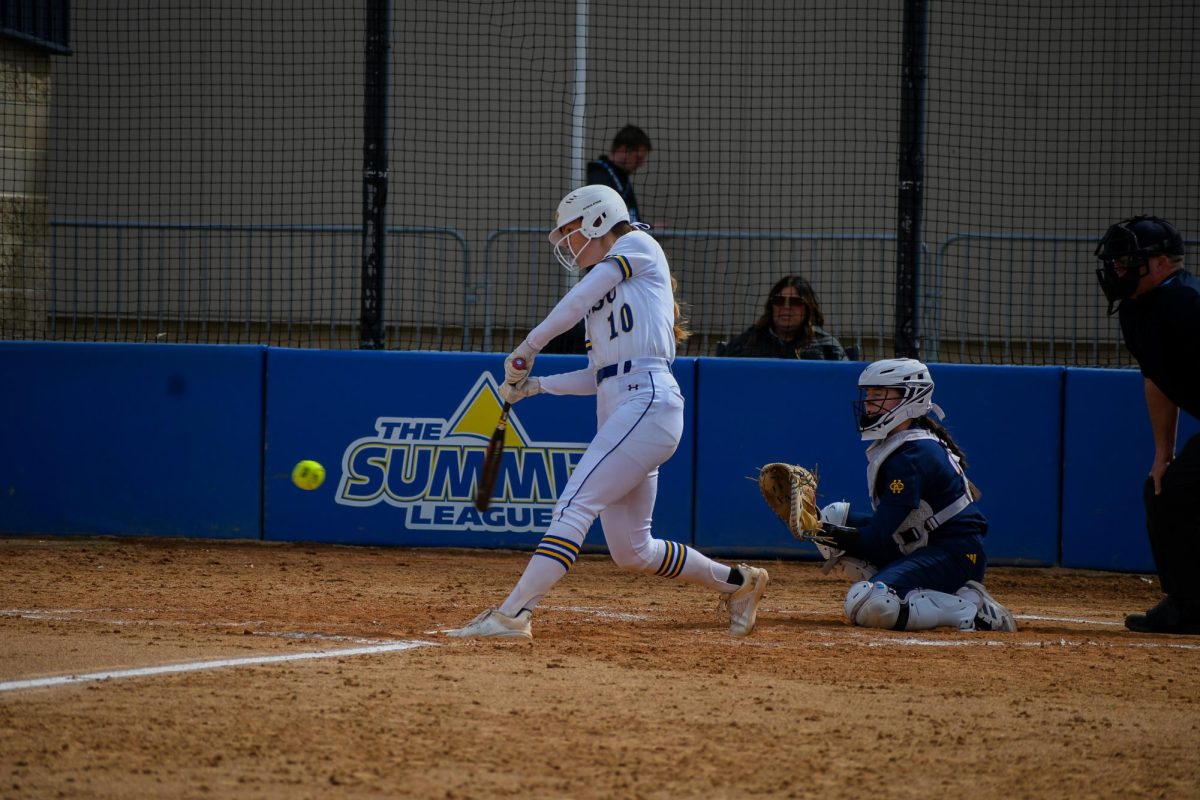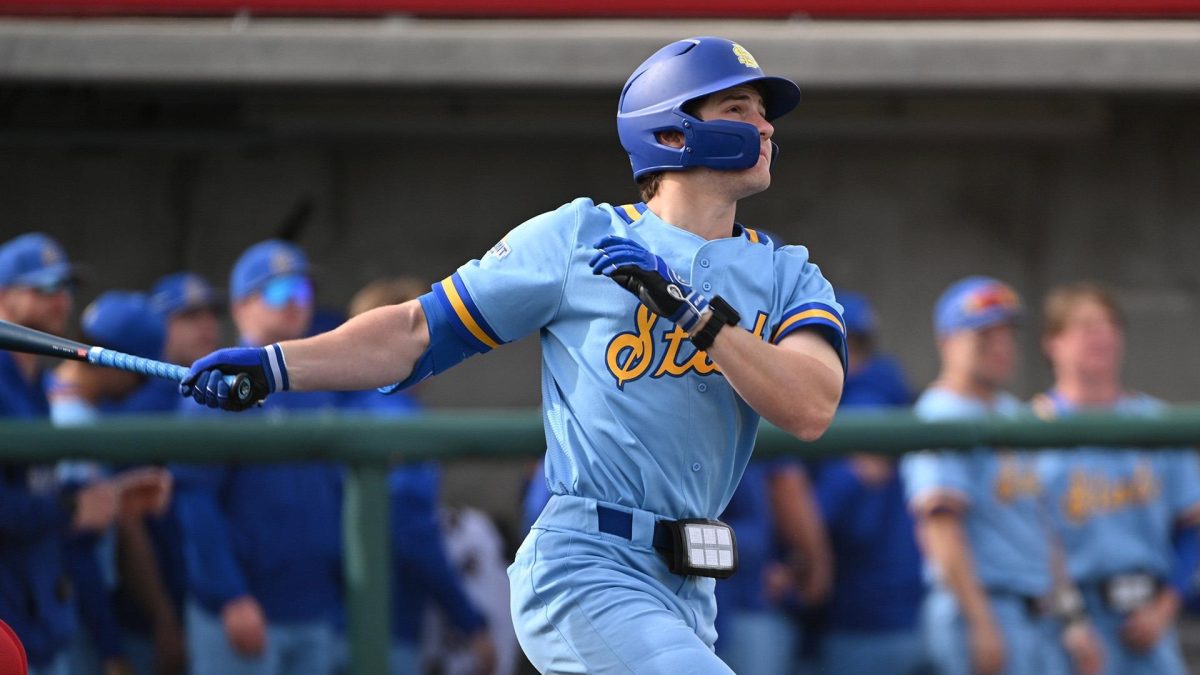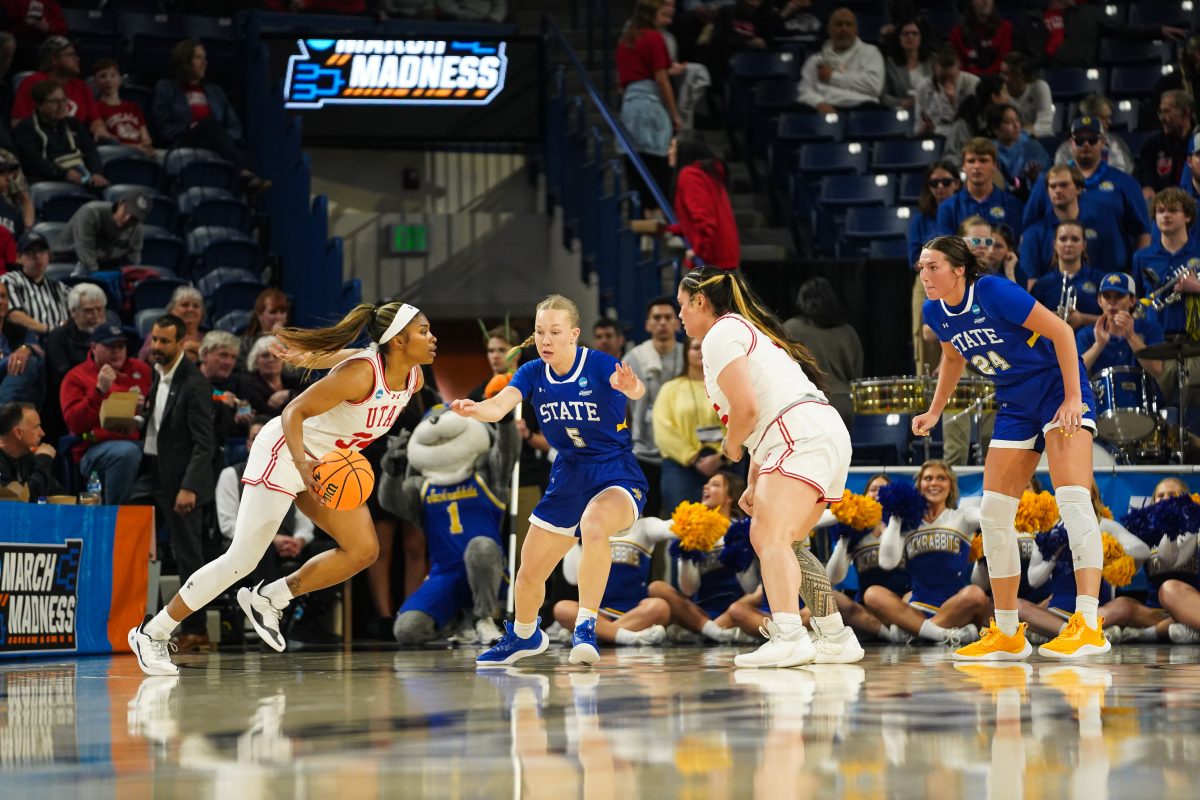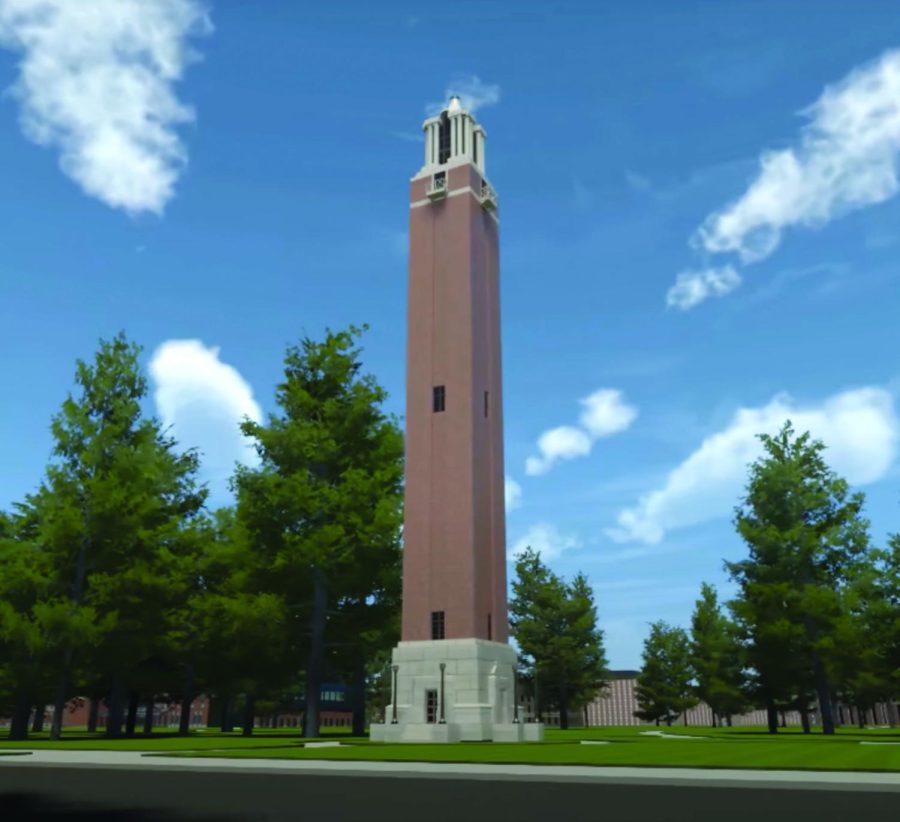Virtual reality shows new ways of teaching
A virtual rendering of The Campanile seen through the virtual reality headsets on canmpus
March 7, 2023
Virtual reality headsets made their way into SDSU classrooms this fall, and they have had a variety of effects on students.
One main concern when it comes to brand-new cutting-edge technology like this is the cost. According to Greg Heiberger, associate dean for student success in the biology and microbiology department, this hasn’t cost the student body anything.
Heiberger said that the headsets came through a grant by Meta and Victory XR, an Iowa-based company who is working to put VR headsets in classrooms and college campuses. He also said that all the VR labs are funded by donors and that the total income for the program is multisource.
Heiberger claims that this program is “not going to cut physical classes right now.” He is optimistic for the future of VR in the classroom.
“We are only a year into this,” he said. “Even if it is just as good as a face-to-face experience, it is still better than a 2D setting in remote and distant education.”
Dennis Hedge, provost and vice president of academic affairs, said that this technology can be used for a variety of different classes.
“There are opportunities to utilize the technology in a number of different programs and fields, spanning the sciences, humanities and arts,” Hedge said. “An individual’s response with VR/AR is driven far more by the quality of the experience itself as opposed to the technology platform. It’s important as we advance in this area to emphasize quality of experience at every turn.”
A few students, like sophomore electronics engineering and technology student Trey Frost, think using VR headsets will benefit some students and help them connect better with the subject matter.
“I feel they can be a great way to demonstrate real life examples for visual learners,” he said.
Also a sophomore electronics engineering student, Evan Gilbertson approves of VR in certain classes.
“I think it is a good idea for laboratory use,” he said.
Sara Madsen, senior lecturer in the department of chemistry and biochemistry, gives her nuanced perspective on how this new technology is affecting students directly.
“It’s kind of been a mixed bag,” Madsen said. “I think in general the students are receptive to it, but they’re concerned VR affects their grade and assessment of them. Some of them love it, and some of them like it but they get kind of sick, tired or dizzy.”
Madsen also commented on VR’s relative inaccessibility and the steps that she is taking to overcome it.
“I try to choose lessons that are not an optical overload. For instance, we could go to the pyramids or mars, but to teach there and ask students to do organic chemistry there would be absolutely exhausting,” Madsen said. “What we’ve been doing is going into creator rooms which gives them an opportunity to relax.”
Heiberger also said that the programs that they are using for classes are also available in a 2D setting as well to help accommodate certain individuals.
“The VR we are doing at SDSU, we are teaching in it. We are actually doing things in VR, and we are doing concepts that are relevant to the organic chemistry curriculum and we are teaching those concepts,” Madsen said. “People think that we cannot teach in VR; I disagree. We are teaching in it. The question is are they learning, and that’s what this year has been about for me.”

